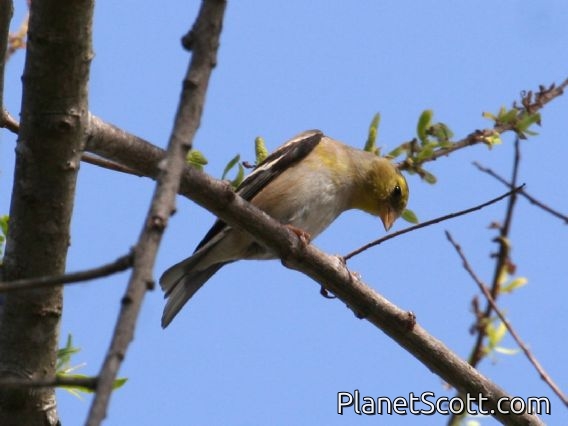American Goldfinch (Spinus tristis)

American Goldfinch (Carduelis tristis) Male Nonbreeding
×


American Goldfinch (Carduelis tristis) Male Nonbreeding
About American Goldfinch (Spinus tristis)
- Kingdom: Animals
- Phylum: Chordates
- Class: Birds
- Order: Perching Birds
- Family: Cardueline Finches and Allies
The American goldfinch is a small North American bird in the finch family. It is migratory, ranging from mid-Alberta to North Carolina during the breeding season, and from just south of the Canada–United States border to Mexico during the winter.
Source: Wikipedia
Visits
-
2006-06-11
Point Reyes National Seashore, United States of America -
2007-04-02
Glen Canyon Park, United States of America -
2007-04-10
Ejido Lagoon, United States of America -
2007-06-14
Cape May National Wildlife Refuge - Deleware Bay, United States of AmericaWoodcock trail. -
2008-08-26
Elgin - Bluff Spring Fen, United States of America -
2009-05-05
Elgin - Bluff Spring Fen, United States of America -
2009-05-08
Burnidge Forest Preserve, United States of America -
2009-05-09
Nelson Lake Forest Preserve, United States of America -
2010-05-08
San Pedro Valley County Park, United States of America -
2010-06-25
Elgin - Bluff Spring Fen, United States of America -
2010-10-30
Miller Meadow Forest Preserve, United States of America -
2012-07-08
Elgin, United States of America -
2012-07-09
Tamarack Lake, United States of America -
2012-07-09
Sax-Zim Bog, United States of America -
2012-07-10
Arrowwood NWR, United States of America -
2012-07-11
Theodore Roosevelt National Park - South Unit, United States of America -
2013-04-19
Bolivar Peninsula, United States of America -
2013-09-01
Glen Canyon Park, United States of America -
2013-09-28
Presidio - El Polin Spring, United States of America -
2013-10-06
Bernal Hill, United States of America -
-
2014-03-04
Chabot Regional Park, United States of America -
2014-08-23
MacKerricher SP, United States of America -
2015-01-03
Woodward Park, United States of America -
-
-
-
-
-
-
-
2016-07-12
St. Shott's, Canada -
-
-
-
-
2018-12-28
San Simeon Elephant Seals, United States of America -
-
-
-
-
-
-
-
-
-
-
-
-
-
-



